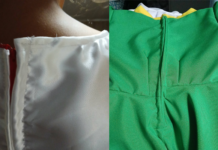Blowing a conch shell could now be easier than ever for Tongans and could produce more powerful sounds because it can be done through a side attached mouthpiece.

The accessory was installed on the whorl of the shell close to its end. Traditionally, blowing the conch in Tonga was made through a hole opened at its end point or by the side of the conch but there was no mouth piece attached.
The new attachment had been described as a new height in an attempt to bring back Tongan musical instruments which are either extinct or dying out.
The creator of the accessory, Tu’ifonualava Kaivelata, said the mouthpiece played an important role in the conch blowing performance.

“It enabled the blower to place the conch shell in a way in which its mouth faced their listeners from the opposite direction”, Kaivelata said.
Normally, the hole for blowing at the end point of the conch means the blower faced the shell’s mouth either up or down or on the left or right hand side of the blower.
“In other words the listeners could not directly see the mouth of the conch in that way and the sound wave will not travel towards listeners if they are at the opposite direction”. Kaivelata told Kaniva News.
He said the mouth of the conch shell should always face listeners who normally stood or sat opposite the blower.
“It is the same idea with what we see in the brass instruments like the trumpet. The mouth is at the front facing listeners from the opposite direction”.
The new mouthpiece also allowed the blower to adjust their lips in a way that could let them release a huge amount of air into the shell, causing it to sound louder, Kaivelata said.
“You can see it is attractive and it makes the conch shell looks fancy”.

Kaivelata, who was currently running training programmes in South Auckland for young people who are interested in old Tongan musical instruments, said the mouthpiece was his own creation.
“I have looked at other ethnicities and the way they blow the conch and they were the same as the original Tongan method of blowing it through a hole at the end point,” he said.
Extinct traditional musical instruments
Other dying and extinct traditional musical instruments Kaivelata was working on were the fangufangu (panpipe), tuki pitu, mimiha and ‘utete.
Dr Tēvita Ka’ili, a Tongan Professor of Anthropology & Cultural Sustainability at Brigham Young University, Hawai’i, said he and other academic colleagues supported works in progress to revive some of the Tongan musical instruments.
Dr Ka’ili said he knew about Kaivelata’s works to revive the old Tongan instruments and he supported him.

“Things are evolving and mostly changing from time to time”, Dr Ka’ili told Kaniva News in Tongan.
He said the good thing about Kaivelata’s works was that it could lead to more innovations and creativities to better the old Tongan instruments.
The conch shell blowing
Will Carleton McKern, an academic researcher of Tongan culture, described the blowing of conch shells by Tongans as “a purely recreational activity”.
‘The shells are of three sizes, each producing a distinct tone, and are usually blown three at a time, producing a minor chord corresponding to the lowest, second and fourth note in the Tongan scale,” he said.
Professor Richard Michael Moyle of Auckland University, who has researched several aspects of Tongan music and cultures, described the conch shell used in the kingdom as “a non-musical device functioning to attract attention to a non-musical phenomenon”.
Moyle said the conch was used nationally as a signalling device on return from successful fishing trips especially for shark and bonito and for announcing various meetings in the village.
“Its use as a musical instrument appears to be confined to cricket matches, where groups of them are blown, always by males, to announce the game and to create and sustain general excitement during the match”.
The Japanese conch shell known as Horagai and Maori known as Putatara used mouthpieces attached through the end point.







